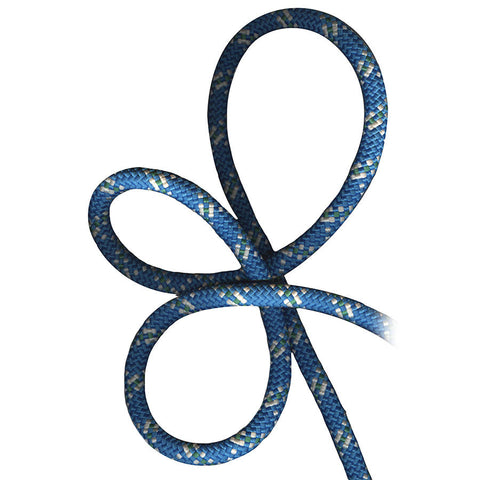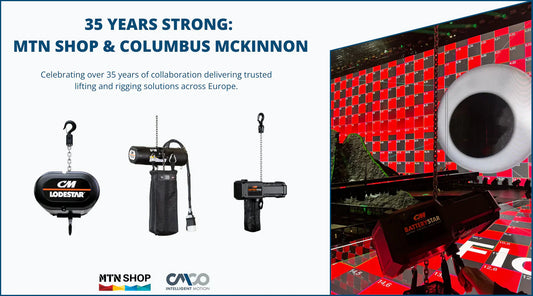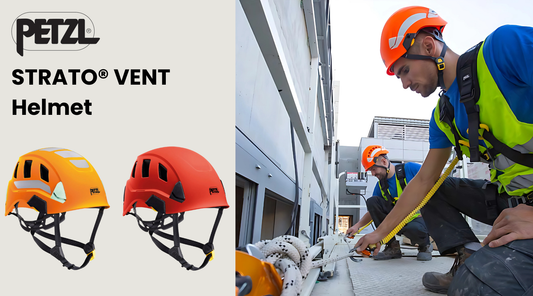Essential Knots for Rope Access Work
Article
Working with rope—whether you’re in rope access, rigging, or forestry—requires knowing how to tie a variety of knots. Tying the right knot in the appropriate circumstance can help keep you safe, as well as increase efficiency in job performance. There are several types of knots to choose from that can help you out of a difficult situation. Below, we outline the key types of knots that are imperative to rope access work and can increase your safety on the job.
 Munters Hitch
Munters Hitch

Munters Hitch, also called the Italian or Crossing hitch, is simple but effective. It provides a method for rappelling without having a rappel device, making it crucial for climbers to know.
Arborists also use this knot in the event a mechanical prusik is not grabbing. People working in rigging utilize the knot to lower heavy motors down from high surfaces, such as catwalks.
Prusik Knot

The Prusik Knot, or Triple Siding Hitch, was developed in 1931 by Austrian mountaineer Dr. Karl Prusik. Its main use is to attach a loop or cord around a rope to secure a tight line.
Its popular for arborists and climbers because it slides along a taut rope when it’s not weighted, yet can efficiently jam upon landing. In order for it to work properly, the loop needs to be made at a point in the rope that is at no more than half the diameter of the main line.
Alpine Butterfly Knot

The Alpine Butterfly knot is used to form a fixed loop in the middle of a rope. It’s especially useful when working with long climbing rope because the knot can be made without having access to either end of the rope. It can also handle heavy loads in either direction of the knot.
Mountain climbers utilize the Alpine Butterfly to tie a middle climber in when there are three people on a rope. Rope access workers also tie the knot to make non-slip loops in the middle of the rope.

Double Figure-of-Eight Knot

The Double Figure-of-Eight loop is sometimes referred to as the “bunny ears” figure eight or the Flemish Bend. Workers use it to build an anchor and equalize a load on two anchors. It is one of the more notably stable double loops, as it is unlikely to slip.
Mountain climbers widely use the knot due to its remarkable strength and because it is easy to visually inspect. Experts recommend learning the knot as the “Figure Eight Follow Through” if users plan to tie a fixed object with the knot.
Bowline Knot

The Bowline forms secure loops at the end of a piece of rope and is easy to tie and untie. It is strong, stable, and will not jam. Further, it does not slip or bind and is trouble-free when there is no load on it. There are several variations of the Bowline, including the Water Bowline and Eskimo Bowline.
It is also referred to as the King of the Knots due to its high adaptability and because every area of the rope access industry uses it.
Slip Knot

The Slip Knot closely resembles the Noose Knot, except the bent part of the knot needs to be formed from the short end rather than the long end.
It is one of the most popular rope methods because it can be used in many ways, including functioning as a temporary stopper. It’s quick and easy to tie, and is made using the fisherman’s Uni Knot with slight changes.
Square Knot

The Square Knot, or Reef Knot, is appropriate to secure non-critical items. It was widely used by sailors for centuries when tying things aboard the ship while on the sea.
In the rope access industry, the square knot is used to bind; however, it must always be reinforced by a second knot for more strength. It’s mostly used in situations where safety is not critical, and it helps workers learn how to tie a half knot. It should never be used as a bend to tie two ropes together.
PMI ISOSTATIC 13MM STATIC ROPE
Available from $222.20
Length: 61 m, 200 m
100% Polyester construction.
Resists flattening under load.
Shop Now
MtnShop has the rope you need for professional rope access!
Sources:
https://www.netknots.com/rope_knots/all-rope-knots
http://www.animatedknots.com/

 Munters Hitch
Munters Hitch


